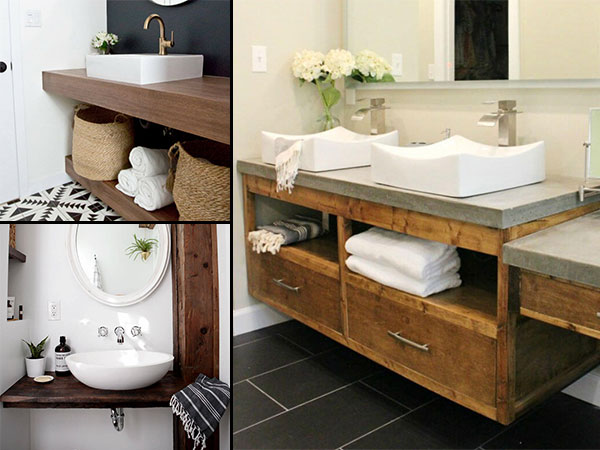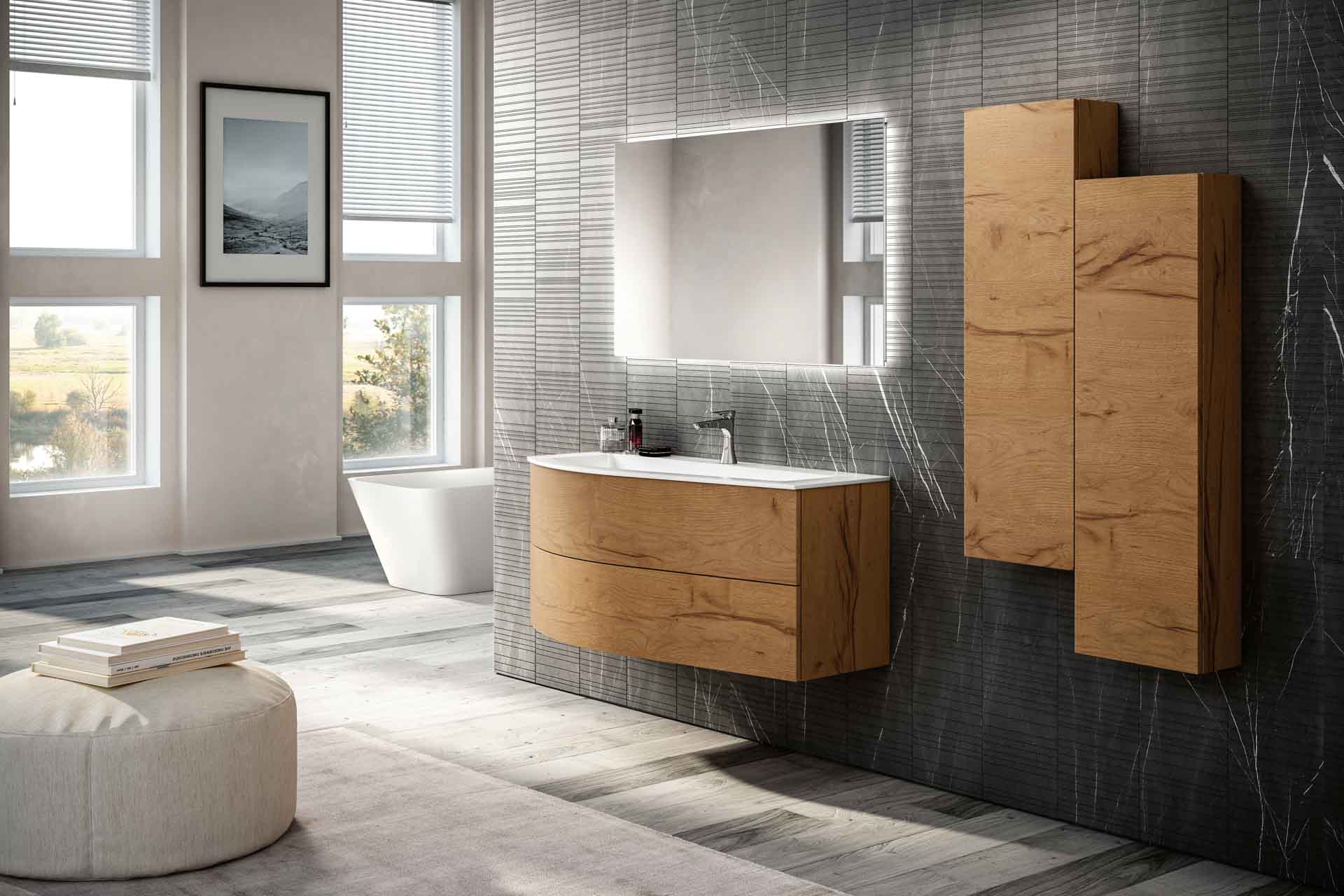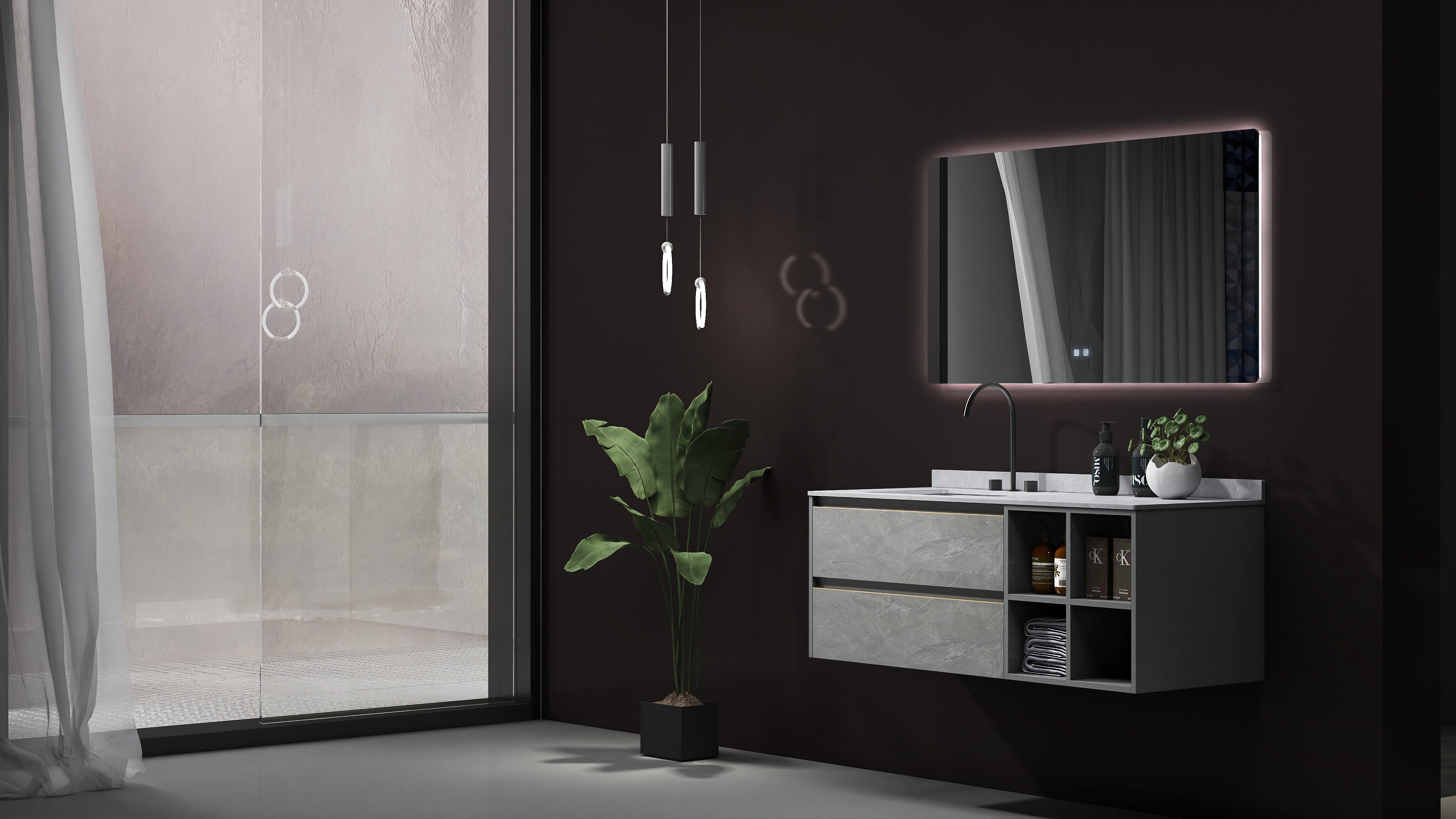Floating Bathroom Vanity Problems
Floating bathroom vanities have become a popular choice for modern bathrooms. They offer a sleek and stylish look while also creating the illusion of a larger space. However, like any home fixture, floating bathroom vanities can also come with their own set of problems. In this article, we will discuss the top 10 common problems that homeowners may face with floating bathroom vanities and how to solve them.
Common Floating Bathroom Vanity Problems
1. Uneven Installation – One of the most common problems with floating bathroom vanities is an uneven installation. This can be caused by incorrect measurements or improper installation techniques. Uneven vanities not only look unsightly but can also affect the functionality of the vanity and cause damage to the surrounding walls and floors. To avoid this problem, it is best to hire a professional for installation or carefully follow the manufacturer’s instructions.
2. Water Damage – Floating vanities are mounted to the wall, leaving a gap between the vanity and the floor. This gap can become a breeding ground for mold and mildew if water spills or leaks from the vanity or the sink. To prevent water damage, regularly check for leaks and fix them immediately. Additionally, installing a waterproofing membrane behind the vanity can provide an extra layer of protection.
3. Limited Storage – While floating bathroom vanities offer a minimalist and modern look, they may lack in storage space. This can be a problem for those who have a lot of bathroom essentials and toiletries. To solve this problem, consider adding shelving or cabinets on the sides of the vanity or opting for a larger vanity with more storage space.
4. Difficulty in Plumbing – Since the plumbing for a floating vanity is hidden behind the wall, any repairs or maintenance can be challenging. It is important to plan the plumbing layout carefully during installation to avoid any future plumbing problems. If needed, hire a professional plumber for any plumbing work on your floating vanity.
5. Limited Customization – Floating bathroom vanities come in pre-made sizes and designs, which can limit your customization options. This can be a problem if you have a specific design or size in mind for your bathroom. To solve this, consider having a custom-made floating vanity or adding unique hardware and accessories to personalize your vanity.
Solutions for Floating Bathroom Vanity Problems
6. Sagging – Over time, the weight of the vanity and the items placed on it can cause it to sag in the middle. This not only affects the aesthetics but can also put strain on the wall and damage the vanity. To prevent sagging, use support brackets or a thicker mounting board during installation. You can also avoid placing heavy items on the vanity.
7. Scratches and Stains – Floating bathroom vanities, especially those made of wood, can easily get scratched or stained. This is a common problem in bathrooms with high humidity levels. To prevent this, regularly clean and dry the vanity and use a protective sealant to prevent stains and scratches.
8. Loose Doors and Drawers – With regular use, doors and drawers on floating vanities can become loose or misaligned. This can be due to poor quality hardware or improper installation. To fix this, tighten any loose screws and check if the doors and drawers are properly aligned. If necessary, replace the hardware with higher quality options.
9. Lack of Support – Floating vanities rely on wall support for stability. If the walls are not strong enough or have weak spots, the vanity may become unstable. To avoid this, make sure to install the vanity on a sturdy and even wall. If needed, reinforce the wall with additional support beams.
10. Limited Accessibility – Floating vanities can be mounted at various heights, but they may not be suitable for all users. This can be a problem for children, elderly individuals, or those with mobility issues. To make the vanity more accessible, consider installing a lower vanity or adding a step stool for easier access.
How to Fix Floating Bathroom Vanity Problems
In some cases, the above-mentioned problems can be solved with simple DIY fixes. However, for more complex issues, it is best to seek professional help. A qualified contractor or plumber can provide the necessary solutions and ensure that the problem is fixed correctly. It is also important to regularly maintain and inspect your floating bathroom vanity to catch any problems early on.
Troubleshooting Floating Bathroom Vanity Problems
To avoid facing these common problems with your floating bathroom vanity, here are some troubleshooting tips:
• Measure and plan carefully before installation.
• Use high-quality materials and hardware for installation.
• Regularly clean and maintain your vanity to prevent damage.
• Fix any leaks or plumbing issues immediately.
• Avoid placing heavy items on the vanity.
• Check for any sagging or misalignment and fix it promptly.
• If in doubt, seek professional help for installation or repairs.
Floating Bathroom Vanity Installation Problems
One of the main reasons for problems with floating bathroom vanities is incorrect or improper installation. This can be avoided by hiring a professional contractor or carefully following the manufacturer’s instructions. If you are installing the vanity yourself, make sure to use the correct tools and materials and check for any potential issues before installation.
Floating Bathroom Vanity Maintenance Issues
Regular maintenance is essential to prevent problems with your floating bathroom vanity. This includes cleaning and drying the vanity regularly, fixing any leaks, and checking for any signs of damage. It is also important to use the correct cleaning products and avoid harsh chemicals that can damage the vanity.
Common Issues with Floating Bathroom Vanities
Some of the most common problems with floating bathroom vanities include uneven installation, water damage, limited storage, and sagging. These can be avoided by proper installation, regular maintenance, and addressing any issues promptly.
Tips for Avoiding Floating Bathroom Vanity Problems
To prevent facing any problems with your floating bathroom vanity, here are some tips to keep in mind:
• Hire a professional for installation if you are not confident in your DIY skills.
• Regularly clean and maintain your vanity.
• Use high-quality materials and hardware for installation.
• Fix any leaks or plumbing issues immediately.
• Avoid placing heavy items on the vanity.
• Use a protective sealant to prevent stains and scratches.
Professional Help for Floating Bathroom Vanity Problems
If you are facing any problems with your floating bathroom vanity, it is best to seek professional help. A qualified contractor or plumber can provide the necessary solutions and ensure that the problem is fixed correctly. They can also offer advice on how to properly maintain your vanity to avoid future problems.
In conclusion, while floating bathroom vanities offer a modern and sleek look, they can also come with their own set of problems. However, with proper installation, regular maintenance, and prompt addressing of any issues, you can enjoy a beautiful and functional floating bathroom vanity in your home.
The Pros and Cons of a Floating Bathroom Vanity

Maximizing Space and Creating a Sleek Look
 When it comes to designing a bathroom, one of the most important decisions to make is choosing the right vanity. And in recent years, the floating bathroom vanity has become a popular choice for homeowners. It offers a modern, sleek look and maximizes space in smaller bathrooms. However, like any design choice, there are both pros and cons to consider before making the decision to install a floating bathroom vanity.
Pros:
First and foremost, a floating bathroom vanity can create the illusion of more space in a small bathroom. By not having a bulky cabinet taking up floor space, the room appears larger and more open. This can be especially beneficial for those with smaller bathrooms or those looking to create a minimalist, contemporary design.
Another advantage of a floating bathroom vanity is the added storage space. With the open space underneath the vanity, there is room to store baskets or other items, providing more storage options than a traditional vanity with drawers. This can be particularly useful for those with limited storage space in their bathroom.
In terms of maintenance, a floating bathroom vanity can be easier to clean as there are no nooks or crannies where dust and dirt can accumulate. And if there is a leak or water spill on the floor, it is easier to clean up as there are no cabinets or drawers in the way.
Cons:
One of the main concerns with a floating bathroom vanity is its stability. As it is not anchored to the floor, it may not be as sturdy as a traditional vanity and could potentially tip over if not installed properly. This is an important consideration, especially for families with young children who may be more prone to accidents.
Another drawback is the limited counter space. As the vanity is elevated, there is less surface area for placing toiletries and other bathroom essentials. This could be a problem for those who require a lot of counter space or have multiple people sharing the bathroom.
Lastly, a floating bathroom vanity may not be suitable for all plumbing configurations. It may be more difficult to install if the plumbing is not located in the wall and may require additional work and expenses to make it functional.
In conclusion,
a floating bathroom vanity can be a great addition to a modern, minimalist bathroom design. It offers the illusion of more space, added storage options, and easier maintenance. However, it is important to consider the potential stability issues, limited counter space, and possible plumbing complications before making the decision to install one. With proper installation and careful consideration of the pros and cons, a floating bathroom vanity can be a stylish and functional choice for any bathroom.
When it comes to designing a bathroom, one of the most important decisions to make is choosing the right vanity. And in recent years, the floating bathroom vanity has become a popular choice for homeowners. It offers a modern, sleek look and maximizes space in smaller bathrooms. However, like any design choice, there are both pros and cons to consider before making the decision to install a floating bathroom vanity.
Pros:
First and foremost, a floating bathroom vanity can create the illusion of more space in a small bathroom. By not having a bulky cabinet taking up floor space, the room appears larger and more open. This can be especially beneficial for those with smaller bathrooms or those looking to create a minimalist, contemporary design.
Another advantage of a floating bathroom vanity is the added storage space. With the open space underneath the vanity, there is room to store baskets or other items, providing more storage options than a traditional vanity with drawers. This can be particularly useful for those with limited storage space in their bathroom.
In terms of maintenance, a floating bathroom vanity can be easier to clean as there are no nooks or crannies where dust and dirt can accumulate. And if there is a leak or water spill on the floor, it is easier to clean up as there are no cabinets or drawers in the way.
Cons:
One of the main concerns with a floating bathroom vanity is its stability. As it is not anchored to the floor, it may not be as sturdy as a traditional vanity and could potentially tip over if not installed properly. This is an important consideration, especially for families with young children who may be more prone to accidents.
Another drawback is the limited counter space. As the vanity is elevated, there is less surface area for placing toiletries and other bathroom essentials. This could be a problem for those who require a lot of counter space or have multiple people sharing the bathroom.
Lastly, a floating bathroom vanity may not be suitable for all plumbing configurations. It may be more difficult to install if the plumbing is not located in the wall and may require additional work and expenses to make it functional.
In conclusion,
a floating bathroom vanity can be a great addition to a modern, minimalist bathroom design. It offers the illusion of more space, added storage options, and easier maintenance. However, it is important to consider the potential stability issues, limited counter space, and possible plumbing complications before making the decision to install one. With proper installation and careful consideration of the pros and cons, a floating bathroom vanity can be a stylish and functional choice for any bathroom.





































































